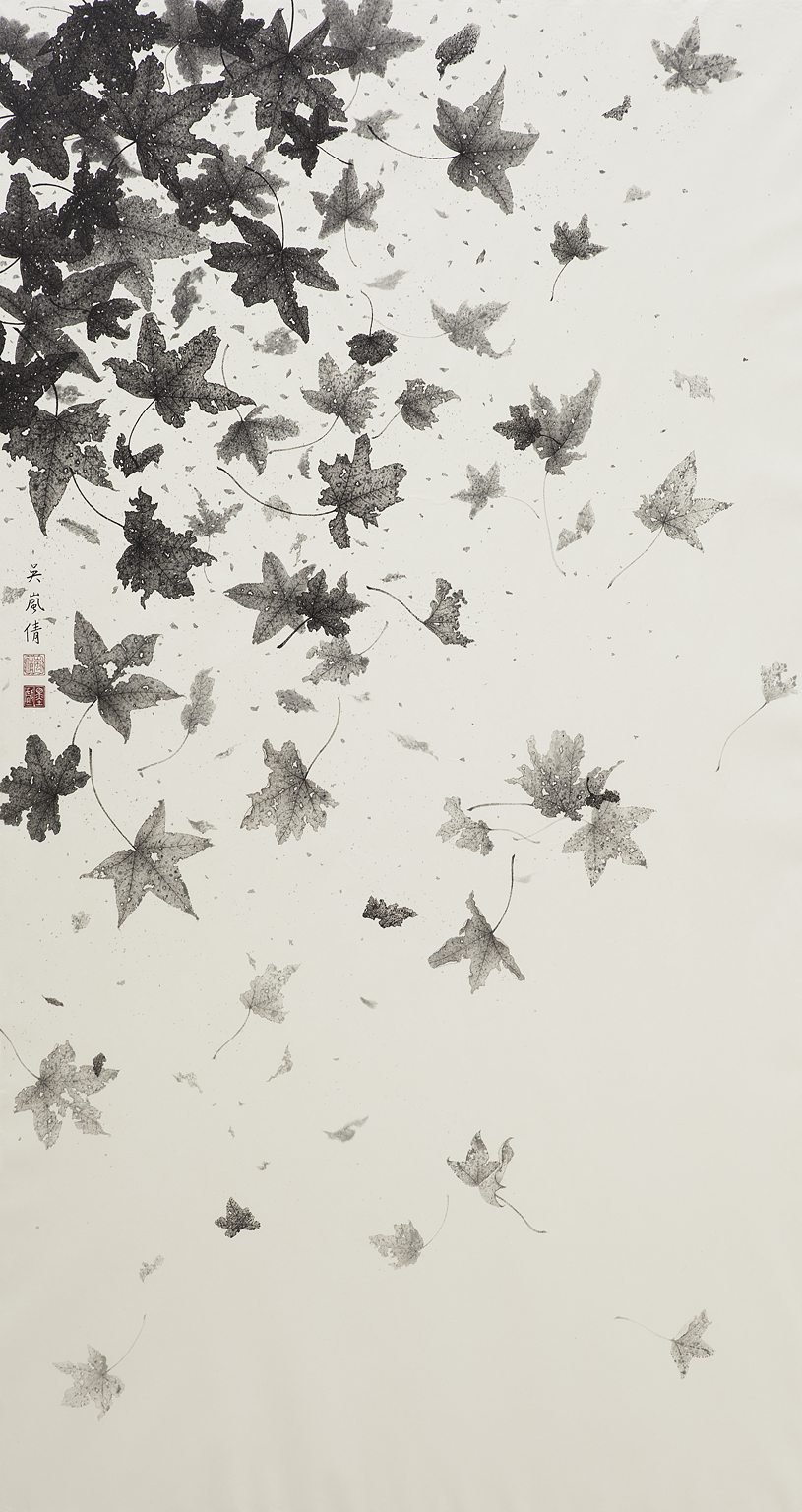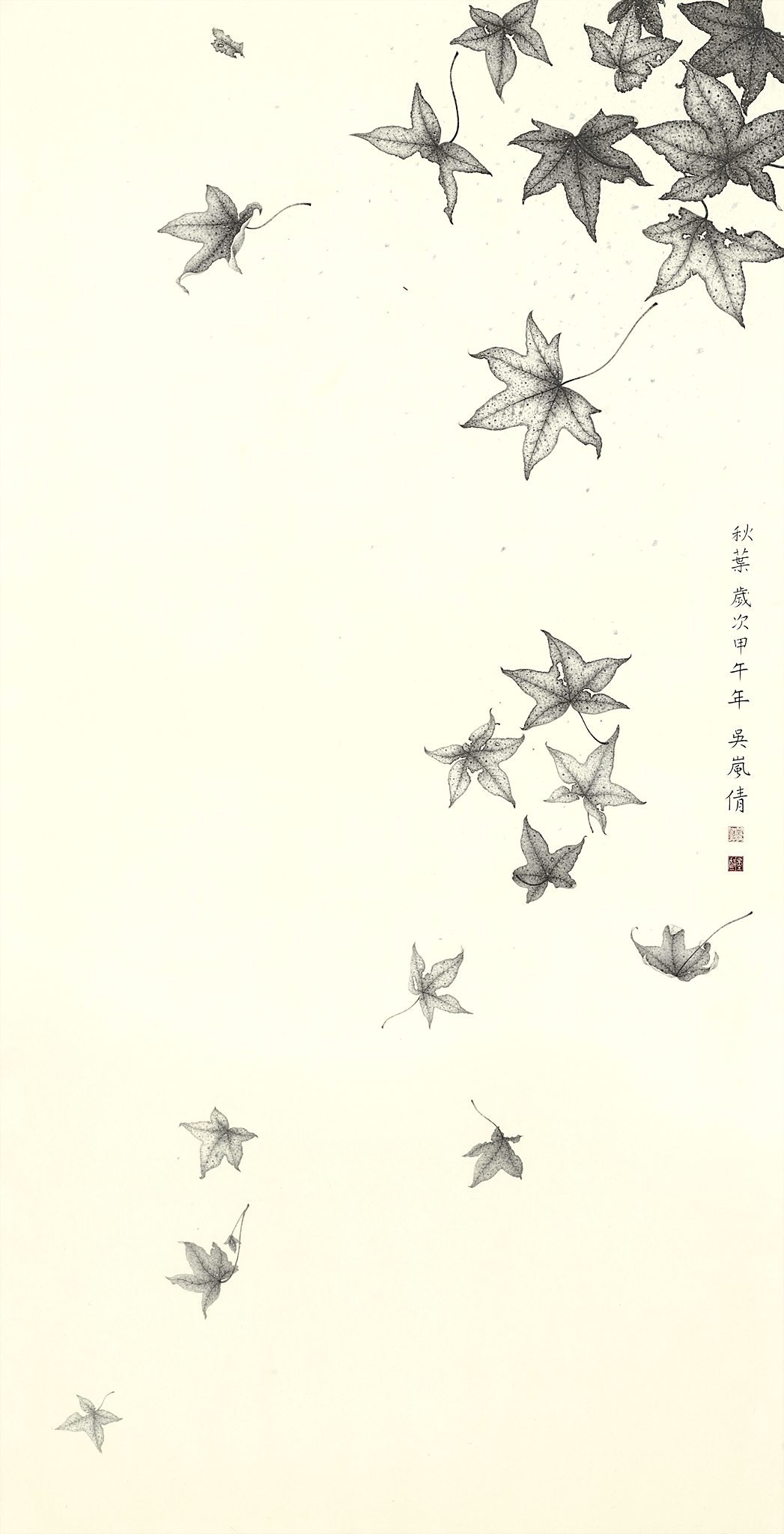Wu Lan-Chiann
Smooth the Image of the World
https://conta.cc/3xuosRI
image Left: Wu Lan-Chiann (吳嵐倩), Snowflakes Quietly Descending, 1999. Ink and colors on paper. Signed by the artist with one seal, 52 ½ x 37 inches, Collection of the Royal Ontario Museum
Right: Plum Blossom, 2008. Pencil on paper, 13¾ x 10¾ inches
Wu Lan-Chiann: Smooth the image of the world
by Luchia Meihua Lee
Invention from tradition in a discourse complicates artistic subconscious expression. The perception of cultural influences affects technique; as context in brush ink painting as a medium might be relevant, and its importance might be intensified by intercultural confrontation. In Wu Lan-Chiann’s work, the challenge from the medium has been disguised by texture, composition, and format. Hybridity has been engaged in these landscape paintings, resulting in overall play with the viewer’s perception of time and space. As Jonathan Hays wrote about Mu Xin’s art, “The particular stillness of the image and the velvety smoothness of the image field” (1) are apparent whether Wu’s works address the season, light and air, or the calm of night.
In these past few years, horror and delight have alternated, and swelling painfulness has tested our endurance. Perhaps we haven't changed enough to ameliorate the inequities in many social subjects. In Wu’s art work, we find a view of a world not ordinarily seen, an alternative to the endless violence of our time space. Her extraordinary paintings possess a mythical quality and profoundly touch the core value of nature that is missing from urban life, and function as a salve beyond the material world.
Born and raised in Taiwan, Wu lives and works in Los Angeles. She holds an MA from New York University’s Fine Art Department. Cross-cultural fusion has operated remarkably in her art to form a sensuous, organic, sleek and hermetically wider embrace as a contemporary Asian women artist.
Lucy R. Lippard" mentioned in 1975 "It is no coincidence that the women artists’ movement emerged in a time of political travail and political consciousness," (2) also pointing out the emphasis by the women’s movement on social structures that have oppressed women. In this vein, I identify this Taiwanese American woman artist, Wu Lan-Chiann as a minority's minority immigrant in US society. This is not an attempt to create distance from the official ideological universe about the patriarchal hegemony, but to lay emphasis on national identity among Taiwanese-Americans.(3) However, Wu has also averred with Lippard that these social movements can provide heightened awareness of the multi-cultural model, which "could indicate a way to move back toward a more basic contact between artist and real life.”(4)
Wu’s art is notable for a certain veracity resulting from the "deliberate modesty of format [and] displacement of literary sensibility into the fabric of the visual." (5) I eschew an intellectual statement about female artists in general, while trying to make sense or identify sources that communicate with Wu's statement and experience, and thus follow her emotionally. When we embrace art by a woman, we too often celebrate delicacy, elegance, and softness. Thus, we can acknowledge the uniqueness of this great visual representative imagery.
Her work is subtle in its details and tactile in its veiled-like application. Upon first impression, the strength of Wu's painting is its connection with traditional brush ink painting. I do not intend to examine the nature of her precedents, but underline the way in which she has modernized and advanced the brush ink tradition. Wu has not only chosen entirely different subjects than classical shan shui (literally, "Mountain and water" which means landscape) exponents,(6) but also given an entirely different treatment of light.
I have found undeniable pleasure in these paintings’ visual expression, from the pictorial techniques to the aesthetics and philosophy. In her Precious Light series, one can easily find the commitment to smooth muscle base. Cursory inspection might deem these paintings flat, but further study reveals subtle colors and application of foggy gradients. Sometimes jet black in blurred light, they strongly develop a quiet depth of harmonic power in the dark night.
In Perseverance, one’s gaze is directed to the tree’s vigorous bark recalling a snake skin, around which interlocking pine needle-laden branches stagger. In traditional Chinese brush ink painting of pine trees, the artist aims not for a realistic effect but a symbolic representation of the independent stance of the literati. So Wu’s detailed rendering of the bark of her pine tree underlines the freshness of her approach, and a reorientation of the pine’s significance.
The nature landscapes display a type of rhythm which seems discordant but not struggling. They are the basis on which she seeks to transcend cultural boundaries and create a timeless commentary on humanity. Wu believes in her art’s power to heal and unite, to express universal humanistic values through and her core conviction that we are one people.
The artist writes that, "art speaks a universal language that people understand across time and place. People enter this world defenseless and curious, share the same hopes and fears, act out of kindness or spite, and go through the same stages of sorrow and grief. "
The evergreen nature of pine trees is a symbol of longevity and perseverance in Chinese culture. Wu painted Perseverance in response to the global pandemic; while people around the world long for life to return to normal, it takes real perseverance to wait for that day. Perseverance is an innate human strength that Is evident only in difficult and challenge times.
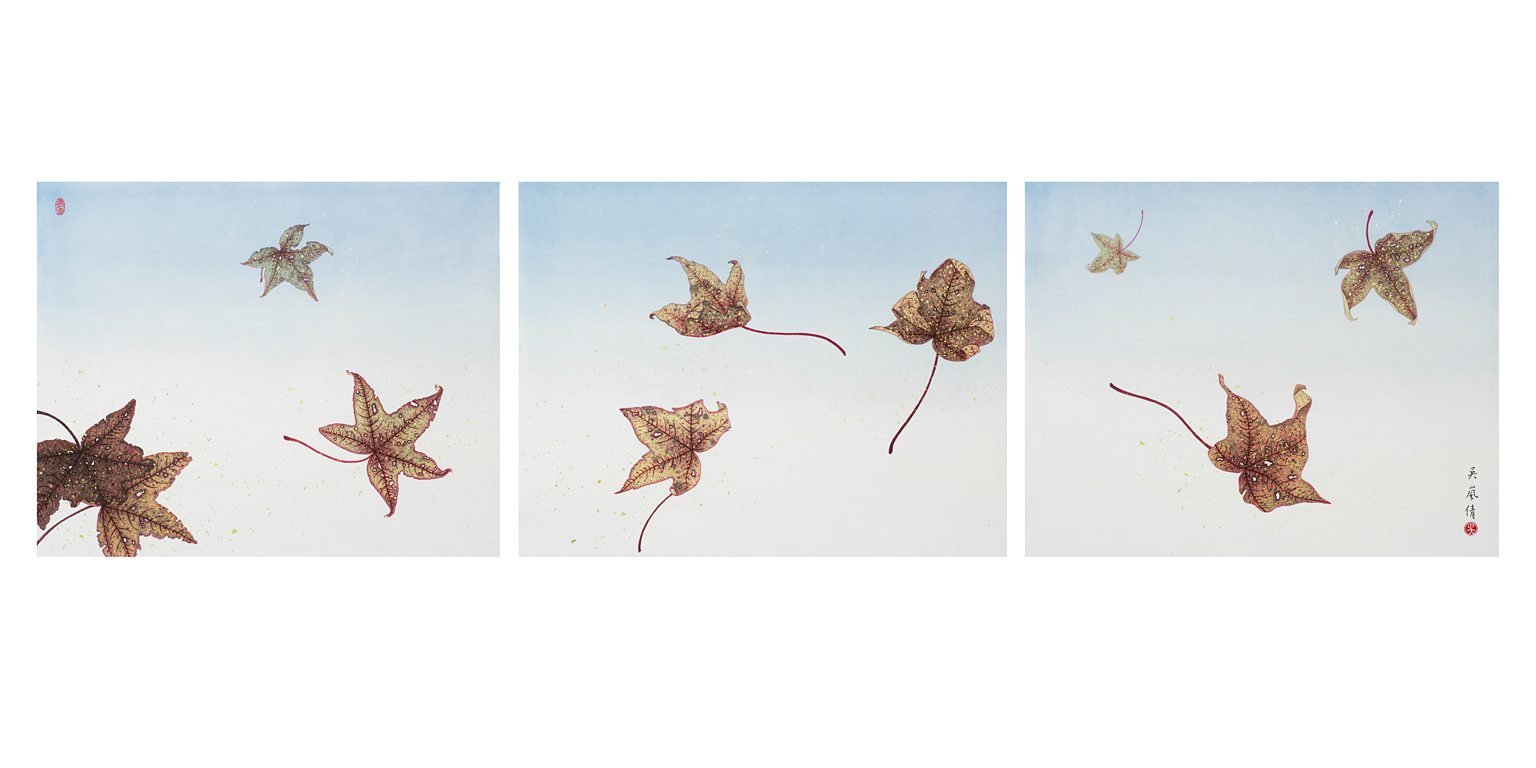
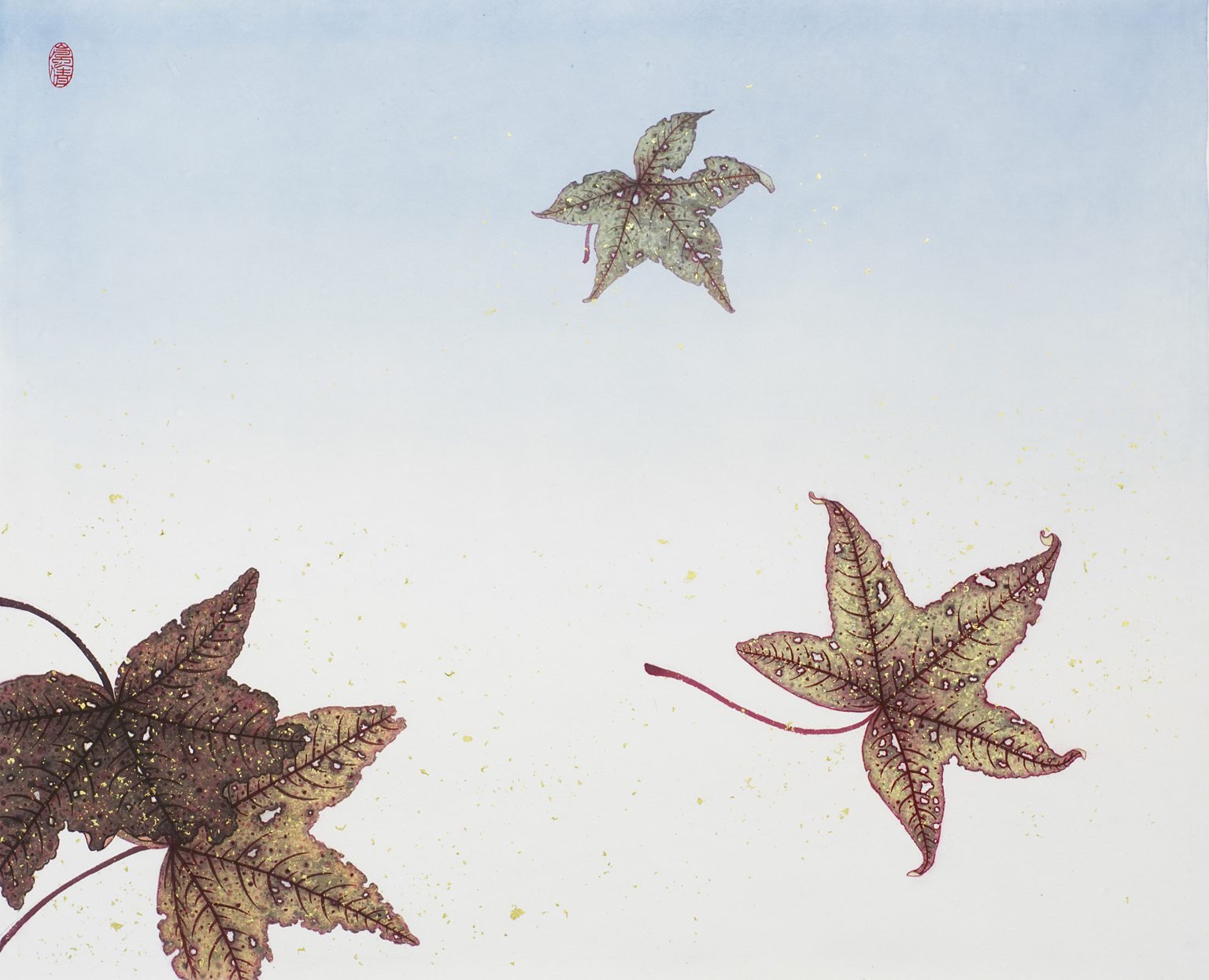
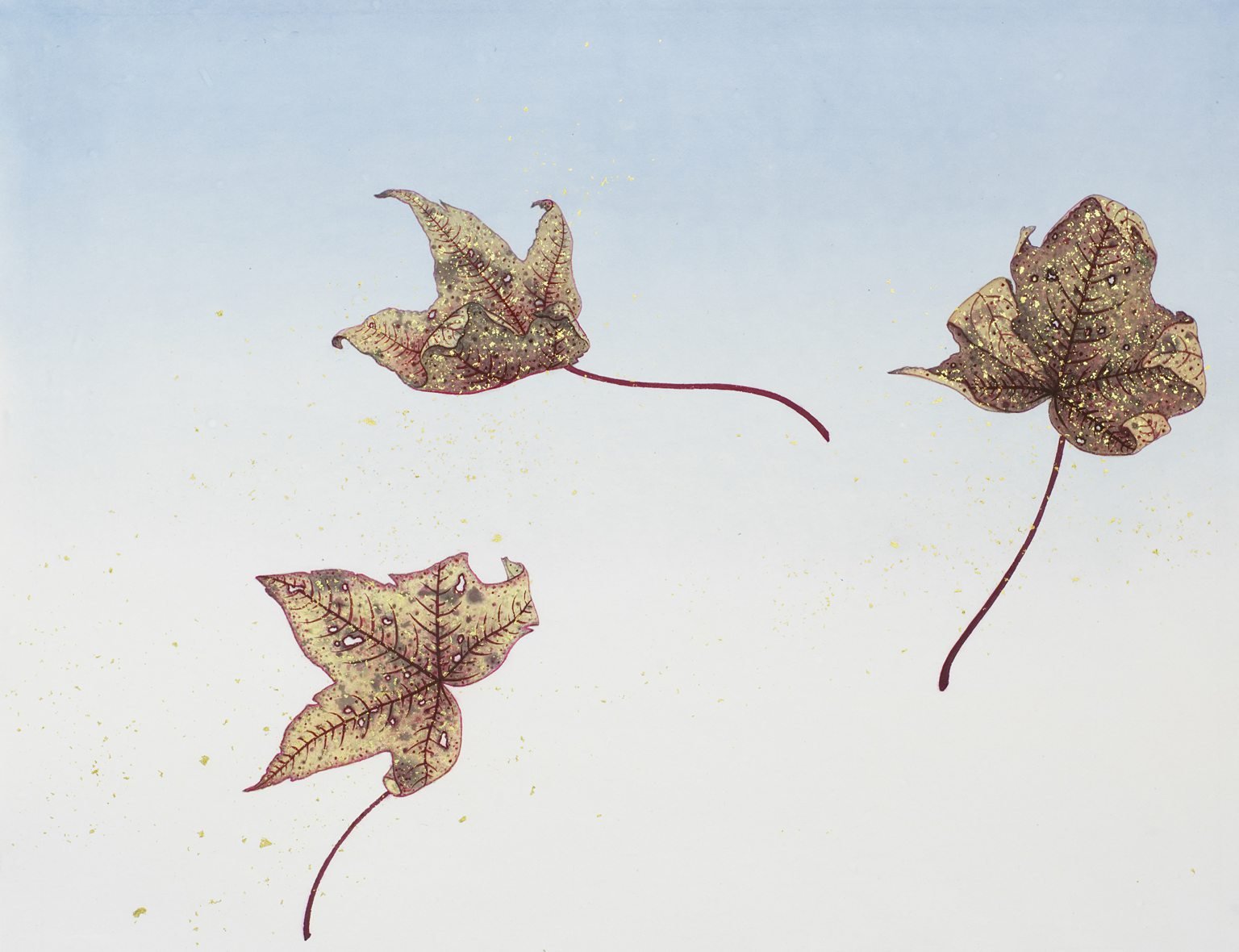
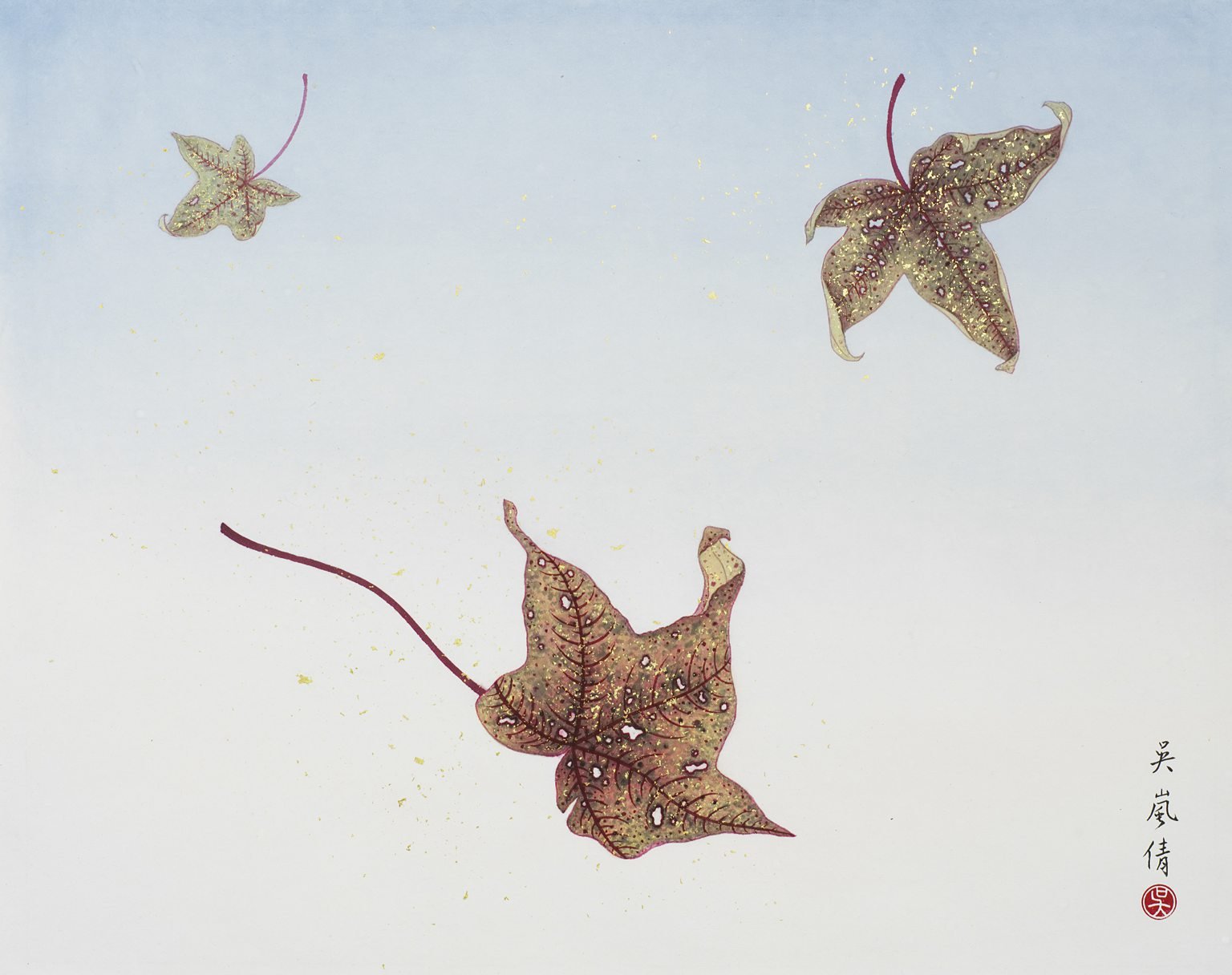
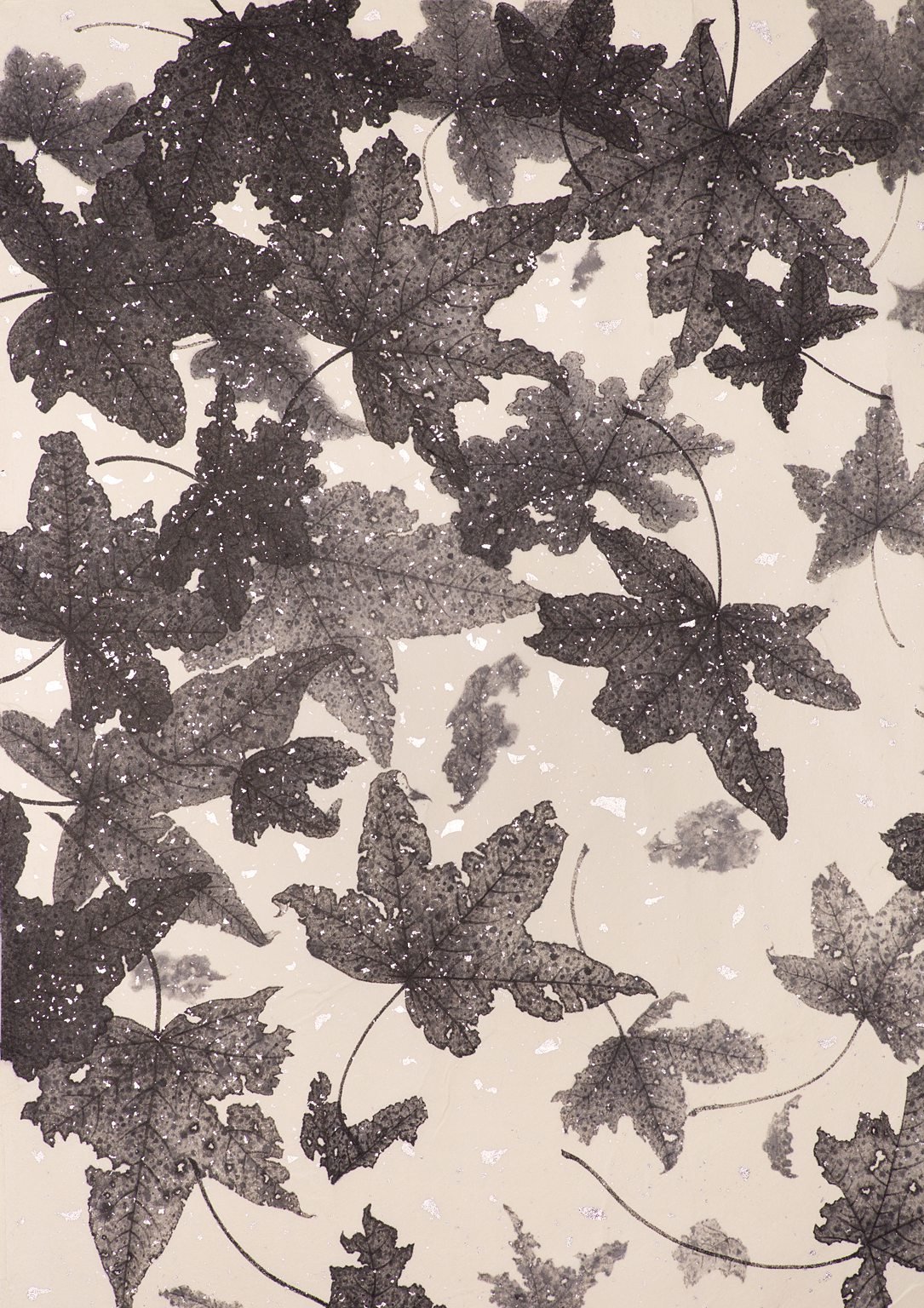
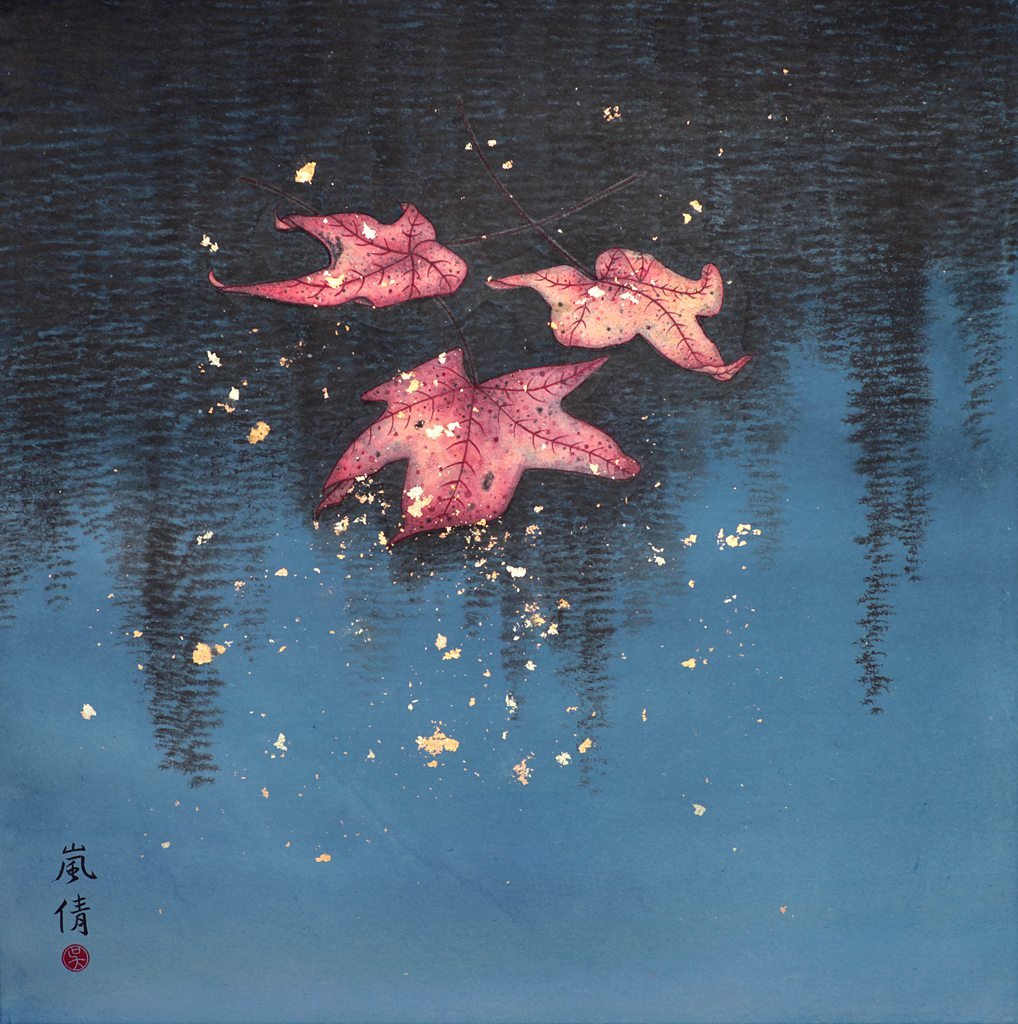
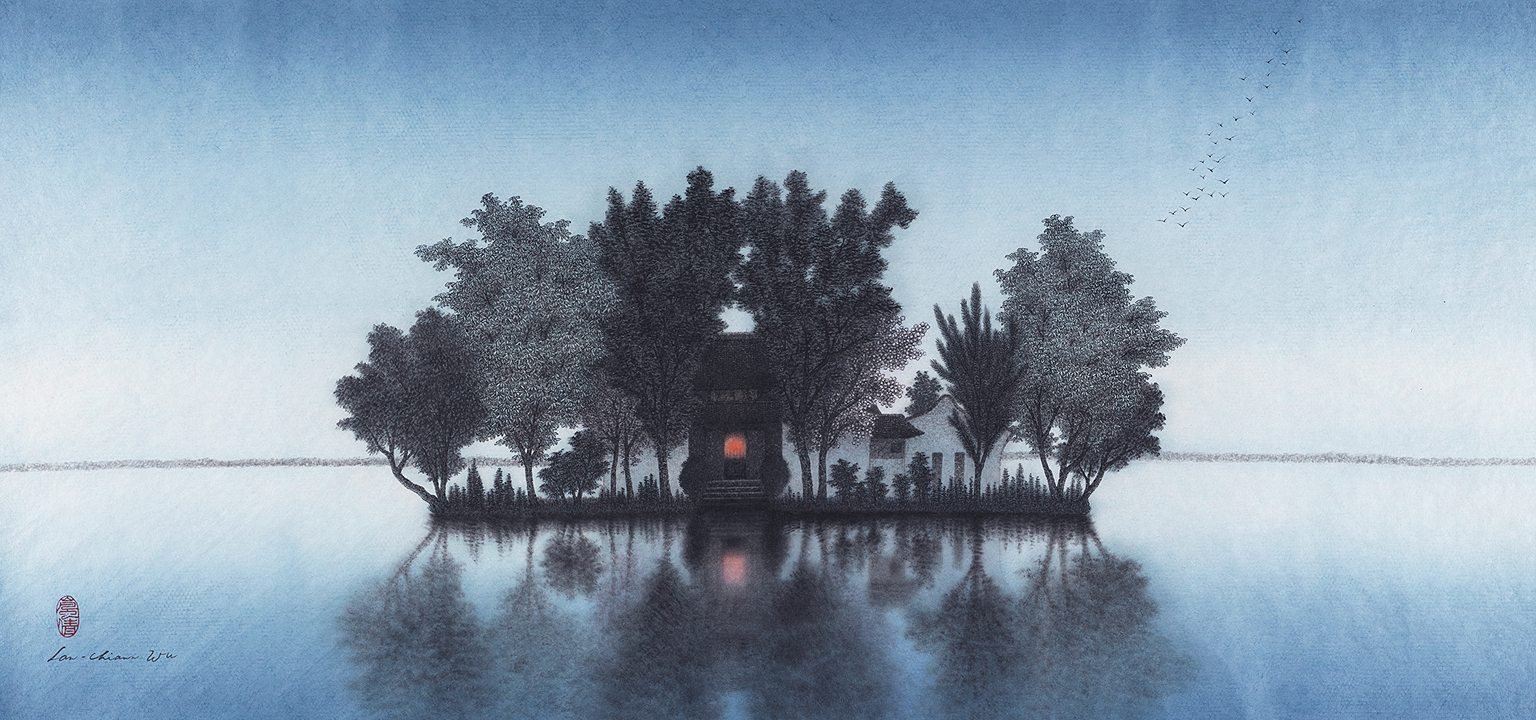
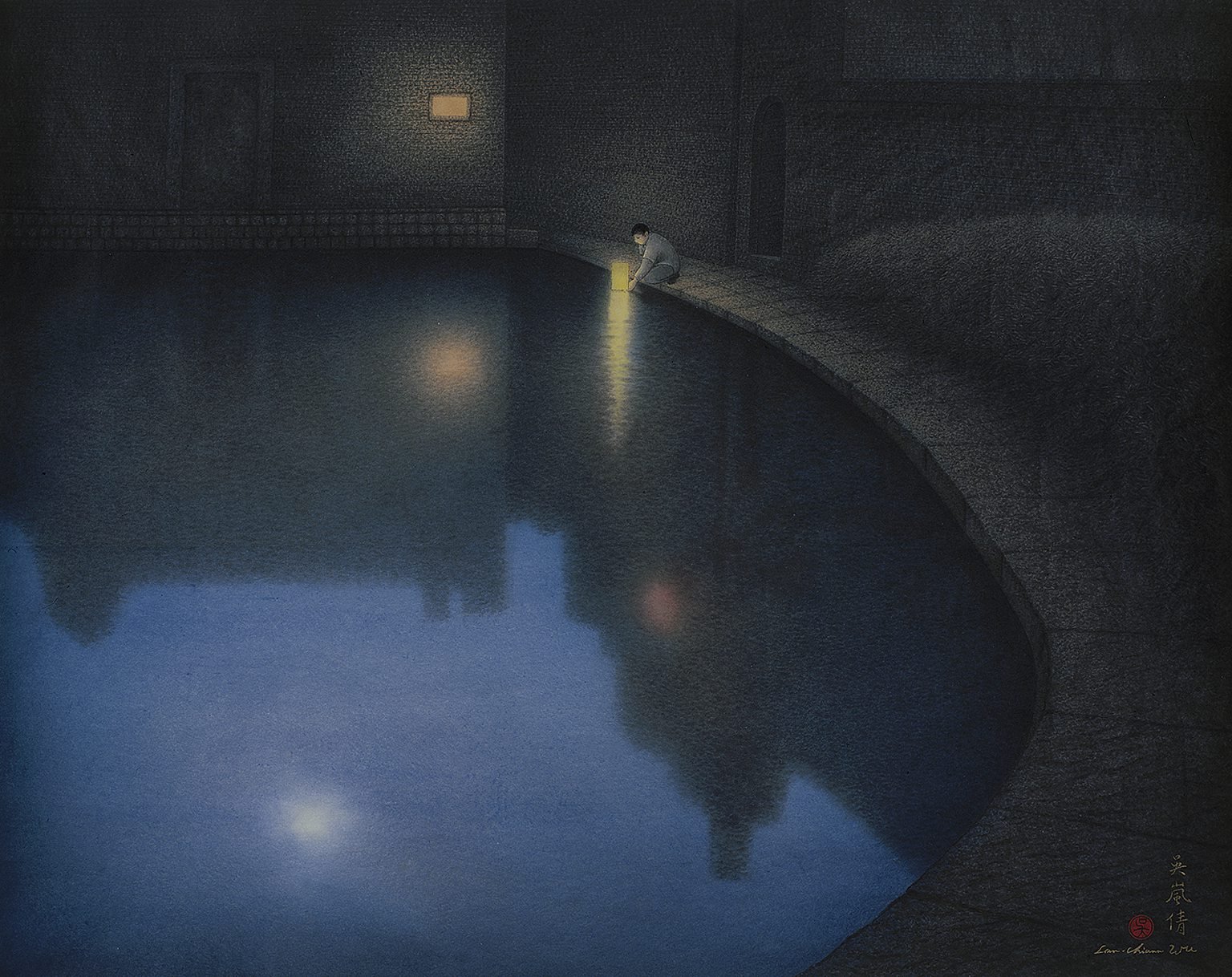
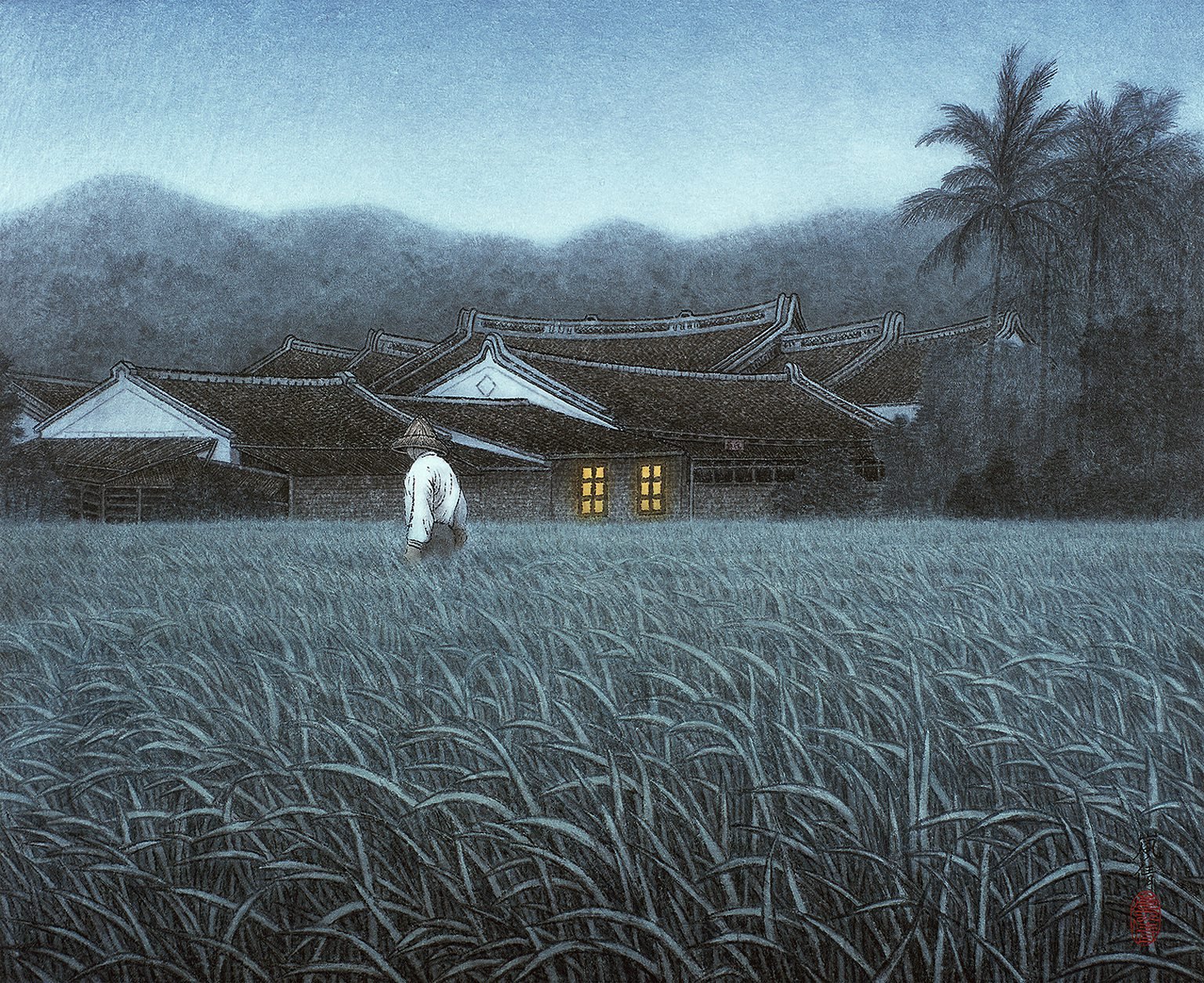
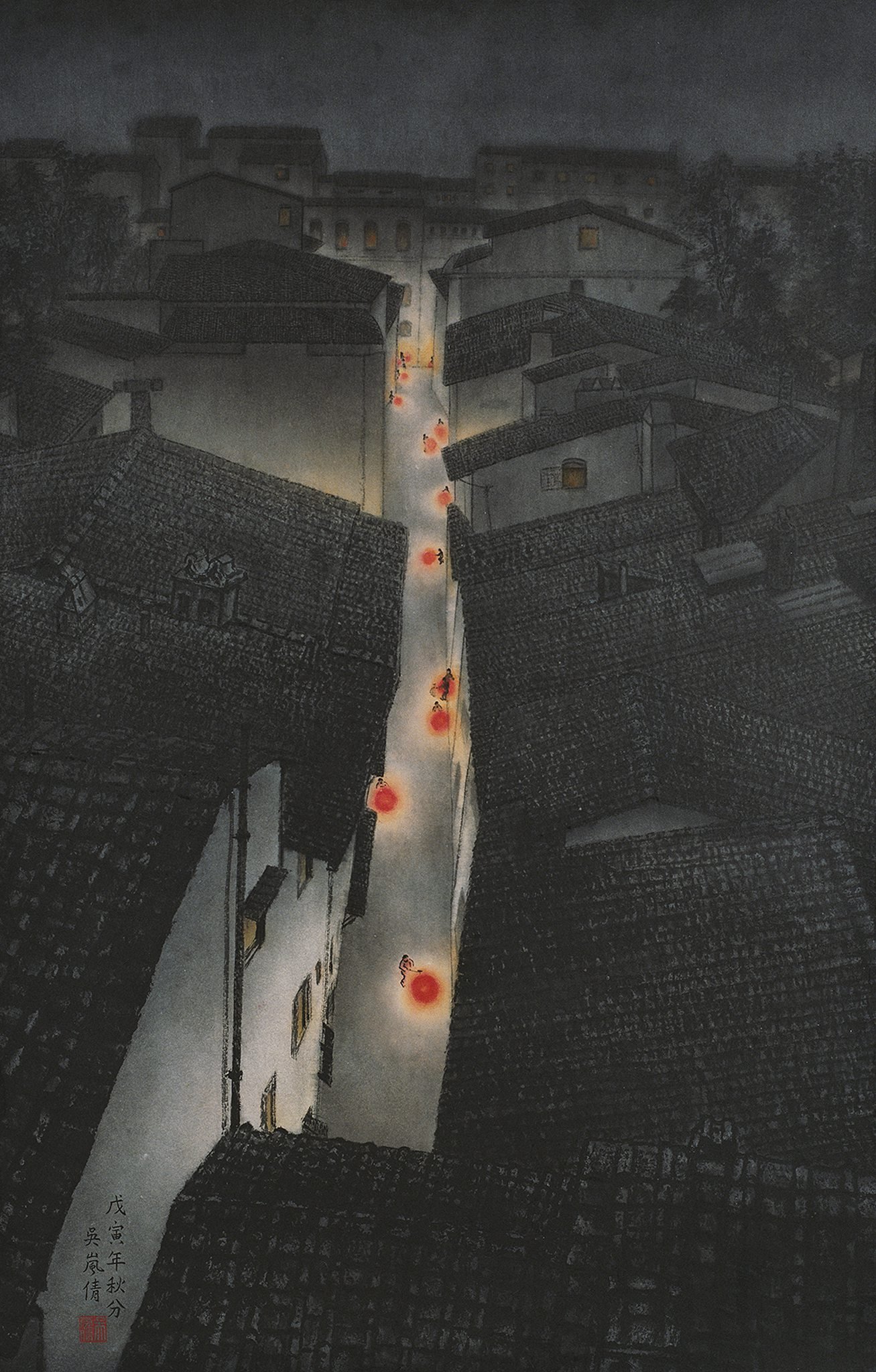
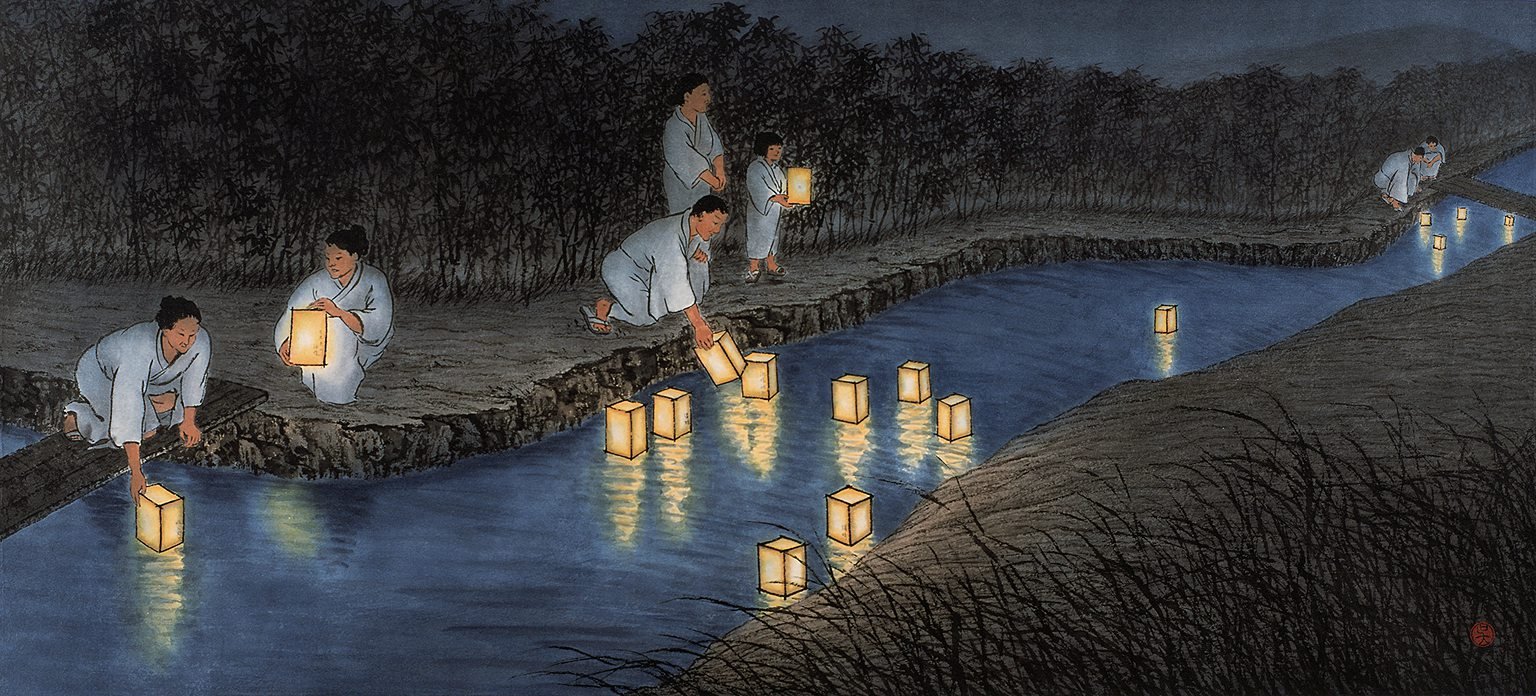
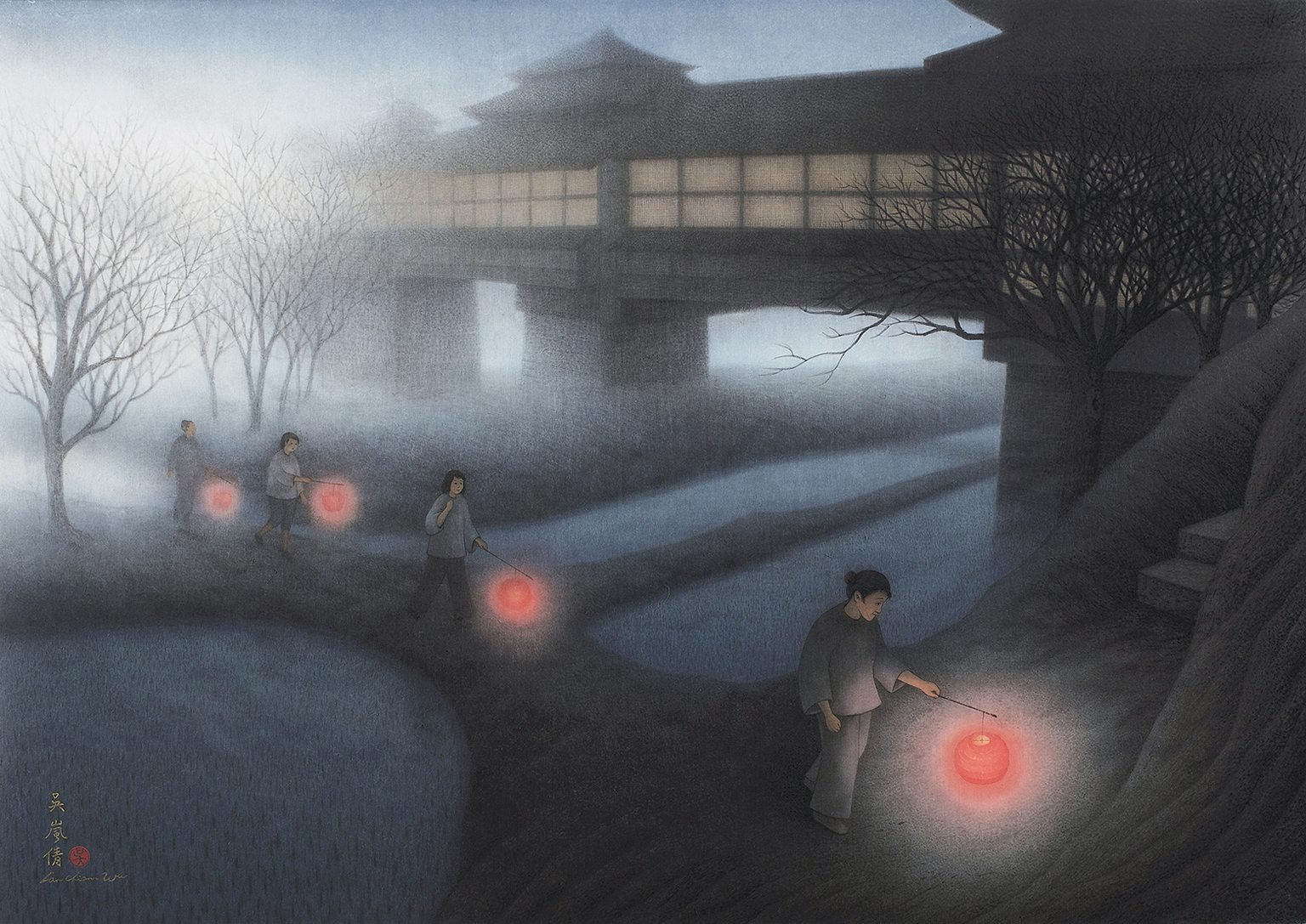
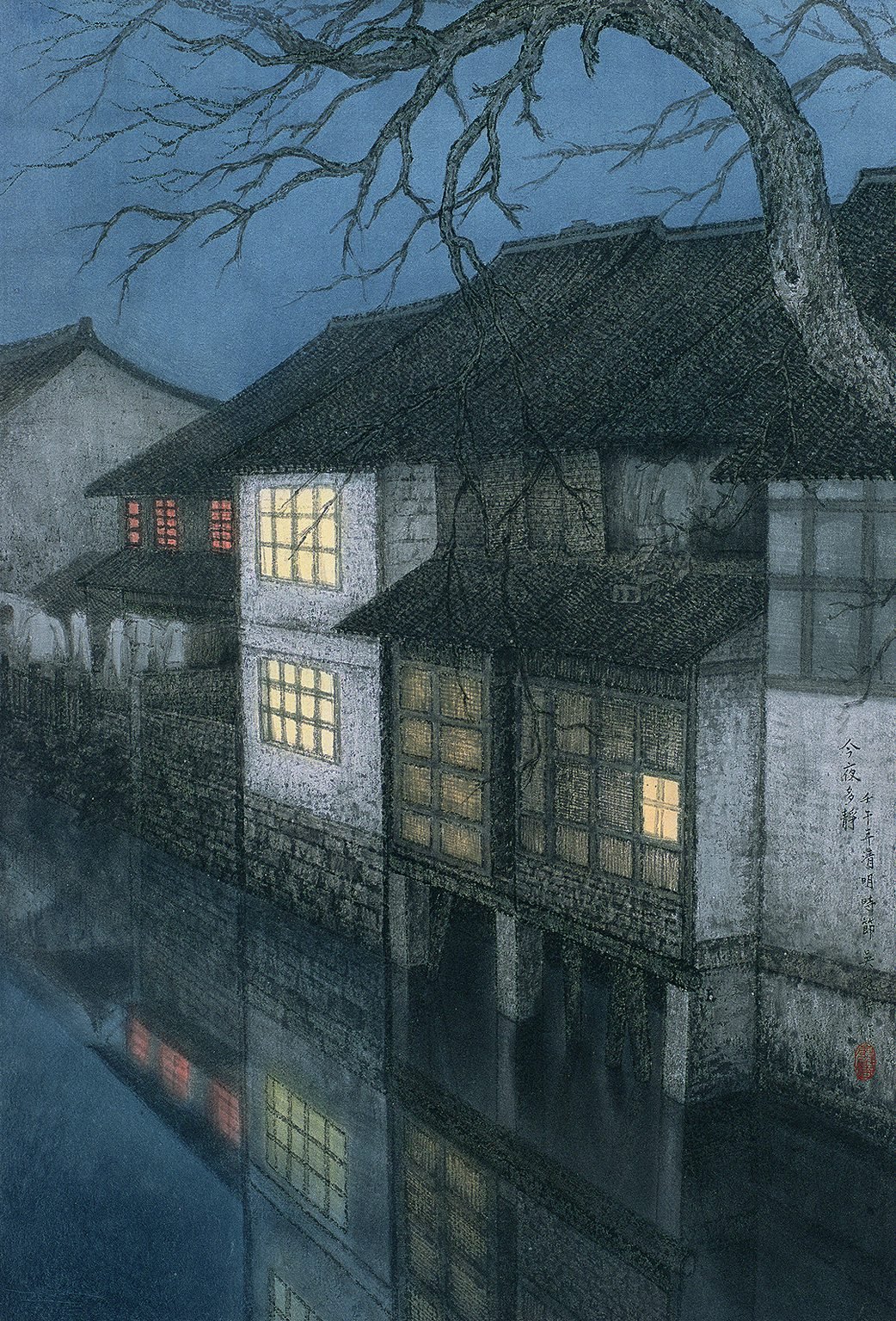
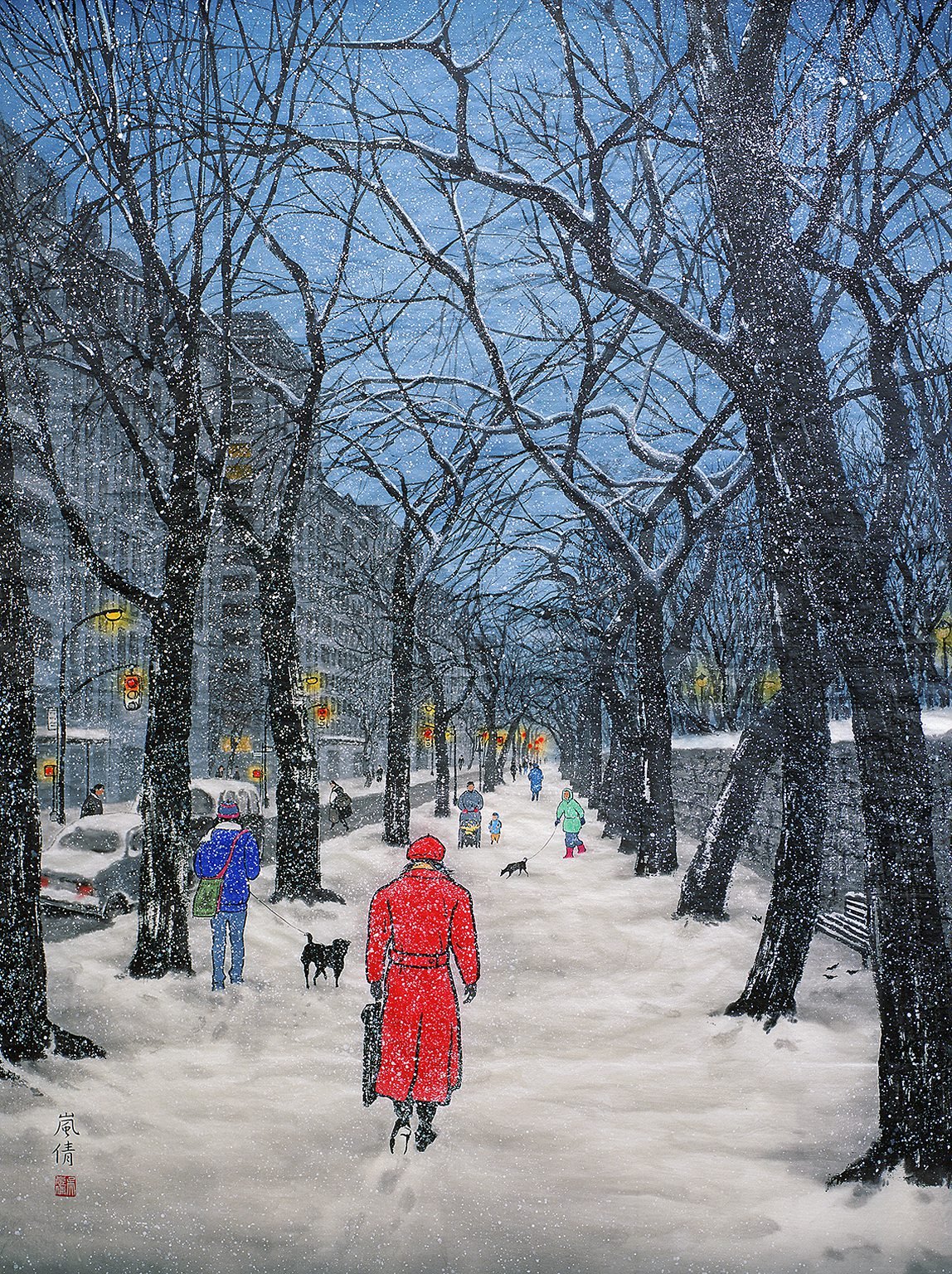
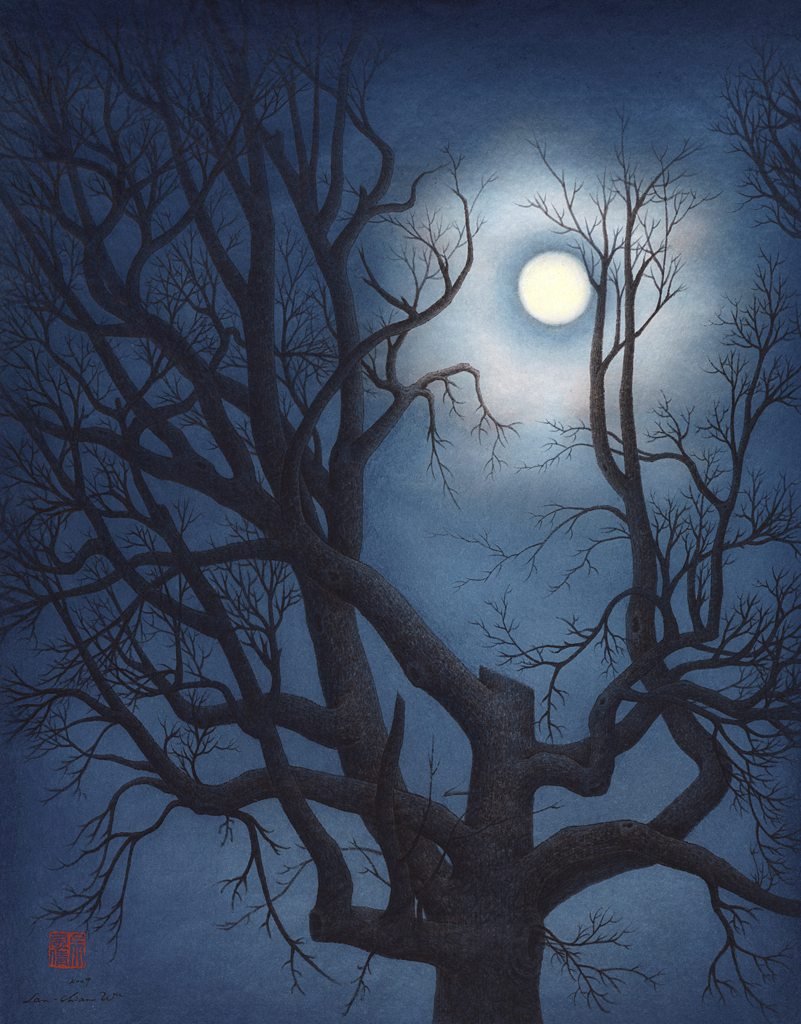
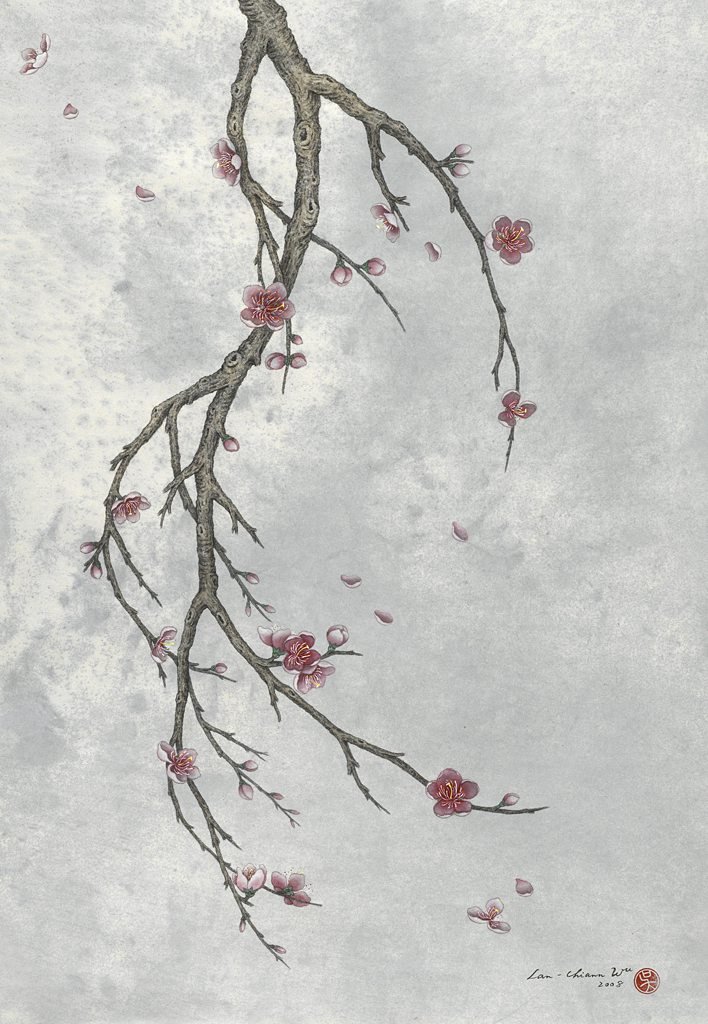
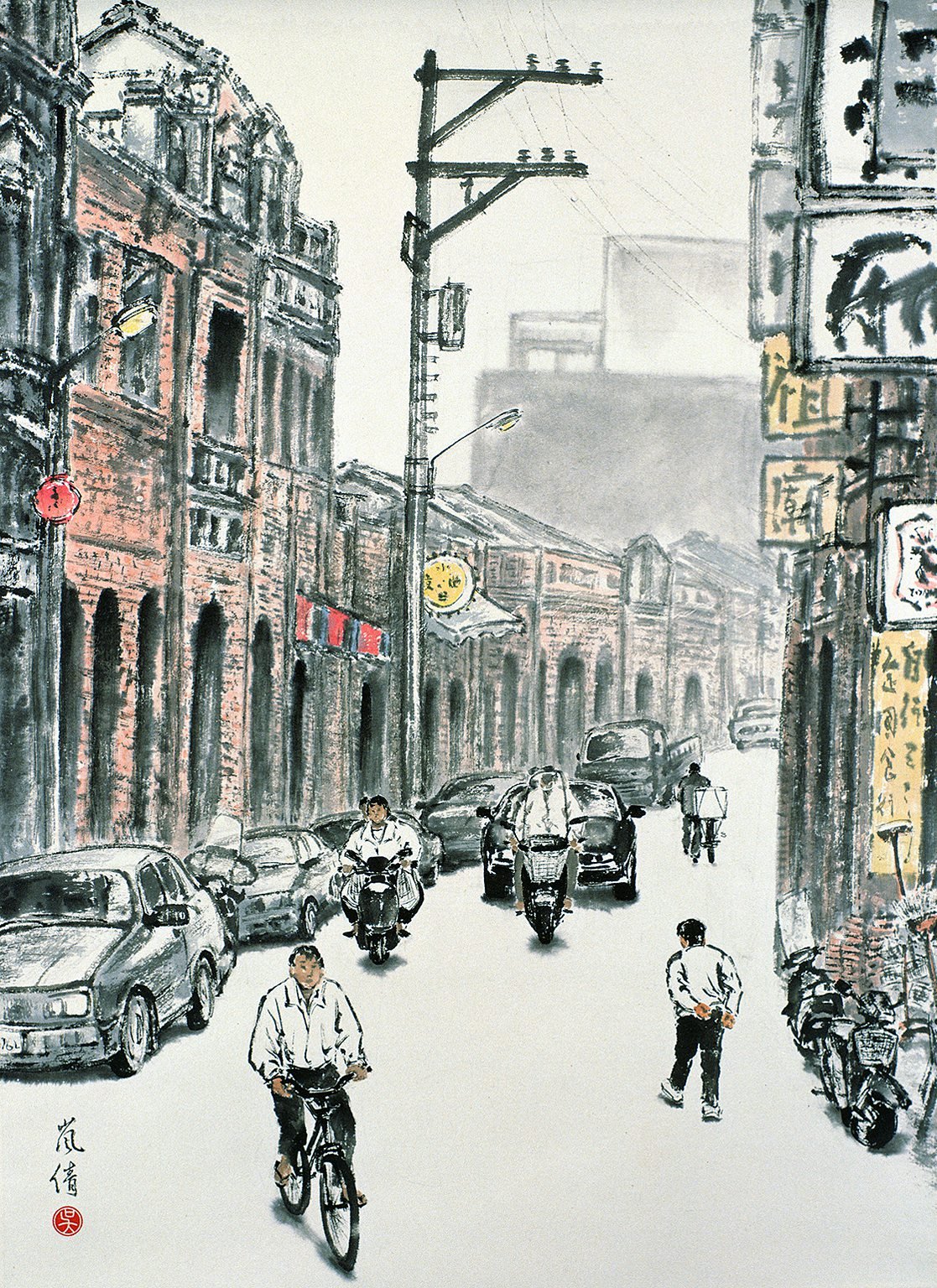
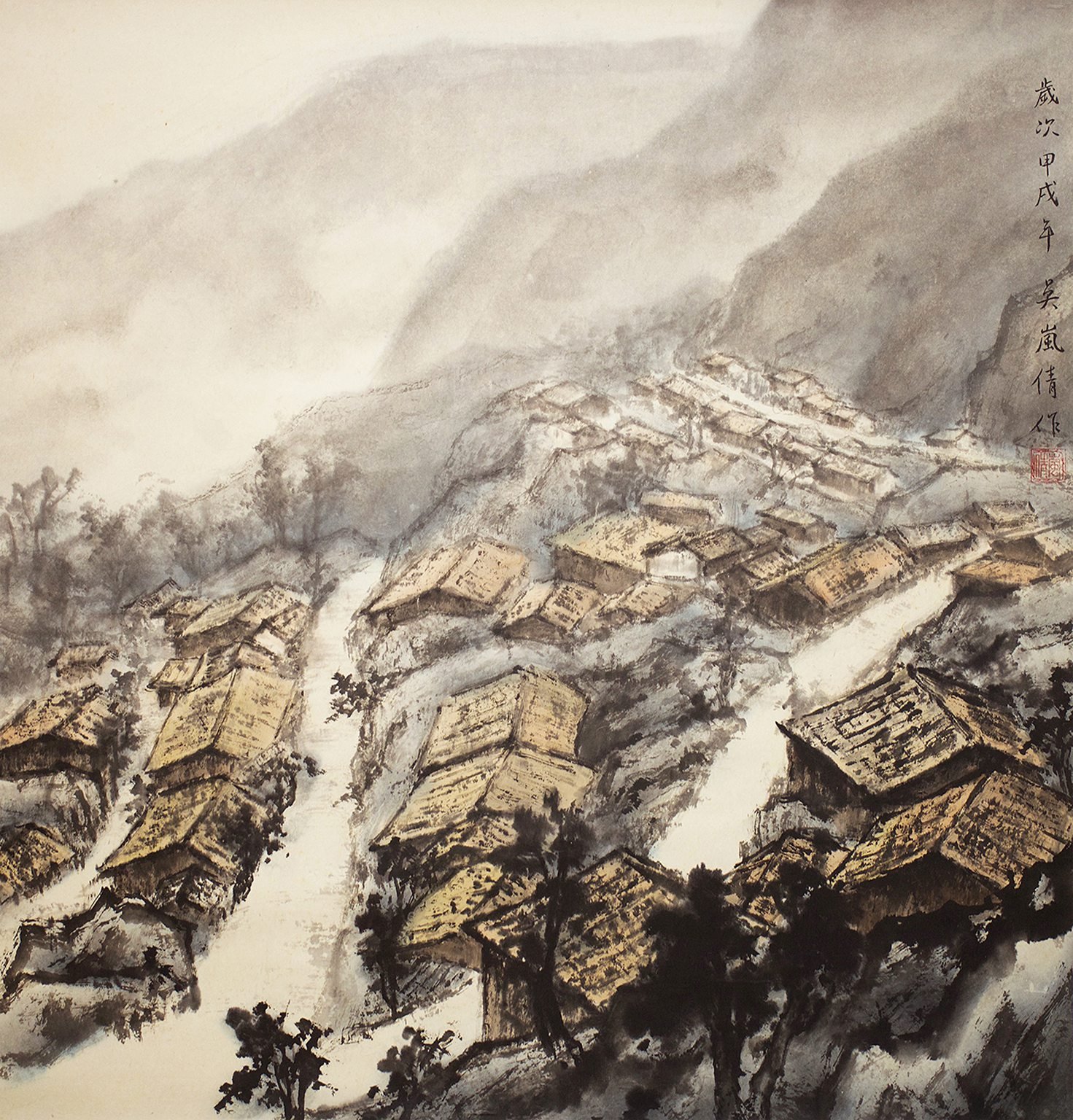
above images captions:
1. Wu Lan-Chiann at Work 2. Full Moon (a pair), Ink, colors and gold leaf on paper, Signed by the artist, with two seals.29 ½ x 112 in. 2014. 3. Full Moon (top half) 4. Full Moon (bottom half) 5. Dancing in the Wind II (a set of three paintings), Ink, colors and gold leaf on paper, Signed by the artist, with two seals. 21 ¼ x 17 in. 2019. 6. Dancing in the Wind II (left) 7. Dancing in the Wind II (middle)8. Dancing in the Wind II (right) 9. Before the Storm, Hanging scroll, ink and metal leaf on paper. Signed by the artist, with two seals. 74 x 38 in. 2015. Collection of The Nelson-Atkins Museum of Art. 10. Before the Storm (Detail) 11. Autumn Leaves, Ink and metal leaf on paper. Inscribed and signed by the artist, with two seals. 38 x 74 in. 2014. 12. Fall Colors, Ink and colors and gold leaf on paper. Signed by the artist, with one seal. 21 x 21¾ in. 2018. 13. House of Souls II, Ink and colors on paper. Signed by the artist, with one seal. 13 ½ x 28 ½ in. 2009. 14. Precious Light, Ink, colors and gold on paper. Signed by the artist, with one seal. 23 x 29 in. 2012. 15. The Good Earth, Ink and colors on paper. Signed by the artist, with one seal. 16 ¾ x 13 ¾ in. 2004. 16. Lantern Festival I, Ink and colors on paper. Inscribed and signed by the artist, with one seal. 37 ¼ x 24 in. 1999. 17. Reflections of the Past, Ink and colors on paper. Signed by the artist, with one seal. 37 ¼ x 24 in. 1999. 18. A New Dawn, Ink, colors and gold on paper. Signed by the artist, with one seal. 25 ¼ x 36 ¼ in. 2013. 19. Tranquil Night, Ink and colors on paper. Inscribed and signed by the artist, with one seal. 26 ¾ x 17 ¾ in. 2002. 20. Snowflakes Quietly Descending, Ink and colors on paper. Signed by the artist, with one seal. 52 ½ x 37 in. 1999. Collection of the Royal Ontario Museum. 21. Li Bai’s Moon, Ink and colors on paper. Signed by the artist, with one seal. 22 x 17 ¾ in. 2009. 22. Winter Breeze, Ink and colors on paper. Signed by the artist, with one seal. 26 ¼ x 16 in. 2008. 23. Old Street in Sanxia, Hanging scroll, ink and colors on paper. Signed by the artist, with one seal. 25 ¾ x 19 in. 1993. Collection of Princeton University Art Museum. 24. Memory of My Roots, Hanging scroll, ink and colors on paper. Signed by the artist, with one seal. 26 ¾ x 26 ½ in. 1994
References:
1. Hay, J. "Mu Xin and Twentieth-Century Painting", The Art of Mu Xin: Landscape Paintings and Prison Notes. Yale University Gallery, 2001. pp. 28-39
2. Lippard L.R. "The Women artist' movement-What next? The pink Glass Swan, The New Press, 1995. pp.81
3. Salecl R. "National Identity and Socialist Moral Majority", New Formations. Routledge, 1990. pp. 25-31. I have tried to avoid simple criticism of the nationalism of Chinese in PRC, but this essay about the opposition moral majorities and authoritarian-populist Communist parties which "have built their power by creating specific fantasies of a threat to the nation and so put themselves forward as the protector of 'what is in us more than ourselves - our being part of the nation.' This analysis applies exactly to the record of the Chinese Communist Party, which has relentlessly and radically assaulted all traditional points of social identification, leaving a chauvinistic nationalism intertwined with support for the party and identifying all foreigners as the feared "Other" as the only remaining public fantasy available to the Chinese.
4. ibis. Lippard L.R. pp. 81.
5. ibis. Hay, J. pp. 36
6. Lee, L. & Sibergale, J. Zhang Hongtu: Expending Visions of a Shrinking World, Duke University Press. 2015. p160.
7. Lee, L. Meditation in Contemporary Chinese Landscape, 2008 Godwin-Ternbach Museum, Queens College, CUNY
More about the artist Wu Lan-Chiann
www.facebook.com/TheArtofWuLanChiann
Wu Lan-Chiann Brief bio
Born and raised in Taiwan, artist Wu Lan-Chiann received her BFA -with highest honors from the Chinese Culture University in Taipei, Taiwan. She holds an MA from New York University’s Fine Art Department.
Wu has exhibited her art, and lectured on the subject of Chinese ink painting, since 1995 in Taiwan, Japan, New York, the Los Angeles area, San Francisco, and the United Kingdom. She is a grant recipient of the Durfee Foundation, the Hakka Foundation, and the Taiwanese American Art Council.
A selection of her work was featured in: Reflections - Contemporary Ink Paintings by Wu Lan-Chiann, a solo exhibition at The Museum of East Asian Art in Bath, United Kingdom from November 2015 to May 2016.
Wu’s work has been collected in Australia, Germany, Japan, the Netherlands, Taiwan, Hong Kong, United Kingdom, and in United States. In 2018, the Nelson Atkins Museum in Kansas City acquired Before the Storm (2015) and, in 2020, the Princeton University Art Museum added Old Street in Sanxia (1993) to their collection.
Wu Lan-Chiann Artist Statement
In my work I explore universal themes and values, which I transform to imagined realities that link past and present across different cultures. We all confront questions as, why are we here and what is our purpose in life. The depth of human intellect and emotion is an inexhaustible resource, for example, the innate strength we possess to overcome personal or collective challenges deeply fascinates me.
While everyone experiences life in a personal way, we all have difficult moments to overcome. I transform my struggles into art that make conscious connections between emotion and place. In my series of Precious Light paintings, the recurring glimmers of light, or sometimes only glimmers of light in my work are metaphors for human resilience: the love, hope and strength that we carry within. In recent years, I started creating a new painting series depicting tree leaves in different shapes and states, as metaphors for human life. In my Leaves Series, each leaf has its own lifecycle displaying unique shapes and color intensities, and, during Autumn, each descends on their individual path floating through the air and touching earth in their own way. The leaves represent human beings, and some have a clear direction, but others are hurt and lost. While some lives are peaceful, others are turbulent, all captured in these paintings. Therefore, my paintings are not mere images; they are layered with content and represent universal themes that each and all of us experience in life.
To me, art speaks a universal language that people understand across time and place. People enter this world defenseless and curious, share the same hopes and fears, act out of kindness or spite, and go through the same stages of sorrow and grief. This is a main theme in my art, and I aim for my work to contribute to a broader dialogue about core values and principles that binds us together as one people. By blending Eastern and Western modes of expression, painting techniques, aesthetics, and philosophy, I seek to transcend cultural boundaries and create a timeless commentary on humanity. I am firmly anchored by the belief that art has the power to heal and unite, and to challenge and inspire. I strongly believe in expressing universal humanistic values through my work and, my core conviction, that we are One People.



